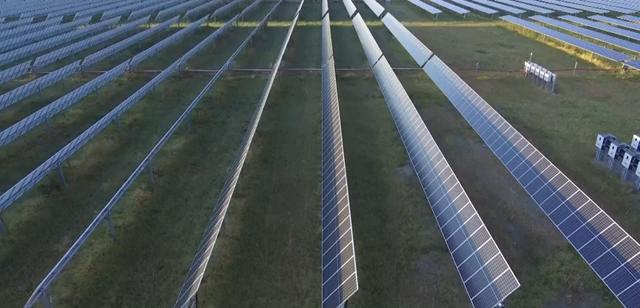In the dynamic landscape of renewable energy, New Jersey is making headlines with its bold and innovative approach to community solar. What began as a pilot program in January 2019 has now evolved into a permanent and promising endeavor known as the Community Solar Energy Program (CSEP).
In this blog, we’ll explore the transformation of New Jersey’s community solar initiative, examining what has changed, what applicants can expect, and the critical role community engagement plays in this exciting journey towards a sustainable future.
Table of Contents
New Jersey Community Solar: Pilot Program Turns Permanent
New Jersey’s Board of Public Utilities (BPU) launched the pilot community solar program in January 2019. Two waves of awards and almost five years later, the BPU has modernized the pilot by establishing the Community Solar Energy Program (CSEP). The CSEP will open for applications on November 15, 2023 with 225 MW available, followed by a second round of 225 MW launching in 2024 and additional capacity after that. The initial application window will run from November 15 through November 28.
As of August 16, when the BPU announced the new CSEP, 29 pilot projects (50 MW) had come online. That number is expected to be significantly higher by year-end; 150 projects, totaling 243 MW, were awarded across the 2019 and 2021 solicitation windows. The new program rules, which are largely an improvement on the pilot, were outlined in a BPU order from August and published as a Notice of Proposal in the New Jersey Register on October 2. Comments on the proposal will be accepted through December 1, so minor rule adjustments could still be made even after the application opens up.
CSEP vs. Pilot: What Changed?
Awards
Instead of using a competitive solicitation process to determine awards, the BPU has proposed a set of project maturity and quality requirements that all projects have to meet. The resulting process should be first come, first served – but due to such high anticipated interest in the program, a tiebreaker may be required. If more than 225 MW of qualified projects are submitted in the initial application window, BPU will distribute awards to projects with the highest guaranteed bill credit discount rate (which must be at least 15%).
Incentives
REC prices for the CSEP will be in line with the value for low- and moderate-income (LMI) projects under the pilot: $90/MWh. The BPU, however, reserves the right to adjust that incentive level if a project receives an allocation from the IRS in the low-income communities bonus ITC program. The bill credits will still be at the pre-tax retail rate, inclusive of both supply and delivery charges but excluding non-bypassable charges. The one notable change is that, in order to incentivize the participation of multifamily housing buildings on commercial rate classes, bill credits for master-metered buildings will also include demand charges. The calculation will use average demand charges from the previous year and updated bill credit calculations across subscriber types for all four investor-owned utilities are available here.
Capacity
The first and second years of the CSEP will both offer 225 MW. Capacity will be separated by utility territory based on percentage of retail sales, which corresponds with the following breakdown for 225 MW: 129 MW for PSE&G, 65 MW for JCP&L, 27 MW for ACE, and 4 MW for RECO. The third year will offer at least 150 MW and any unused capacity from a given year will roll over into the subsequent year. Projects that were approved to participate in the pilot program but have not reached operation will be allowed to register under the CSEP without counting against these capacity limits, as long as the new program’s requirements are met.
Product
The minimum bill credit discount for all projects is 15%, but as noted above, a higher discount gives your project a better chance in the case of a tiebreaker. The rules also include a requirement for utilities to implement consolidated billing systems by January 1, 2025, at which point all residential subscribers will have to receive a consolidated bill. The BPU has mandated that the model allow for as many savings rates as needed for different subscribers on a single project and committed to setting up a working group for stakeholders to provide input as consolidated billing implementation begins.
Subscribers
Applicants will no longer have the option to limit the geographic zone for eligible subscribers to a project; under the pilot, applications would be viewed more favorably if subscribers only came from counties or municipalities adjacent to the site of the project. Now, subscribers are eligible as long as they live in the utility’s service territory. The pilot program reserved 40% of capacity for projects that served at least 51% of capacity to LMI customers, but all 150 pilot projects ended up being LMI-access projects. Thus, the carveout has been removed and replaced by a simple program-wide requirement to meet 51% LMI. The anchor rule has carried over as well – no single subscriber can be allocated more than 40% of the project.
Income Verification
Solstice is thrilled that the BPU has given a green light to self-attestation, which is the least intrusive method for income verification and the only one that truly creates accessibility for every single qualified household to participate. New Jersey now serves as an example for other programs around the country, especially since regulators didn’t start here – it’s taken several years of advocacy and lessons learned. When the program was initially authorized in 2018, it required income verification through either proof of participation in one of only four state programs or copies of federal tax returns. As a result, potential subscribers were skeptical upon being asked to provide sensitive personal information. Since then, New Jersey has removed the tax return verification method, increased the number of qualifying income-based programs, and introduced geo-qualification. Now, beginning in November when the standardized form is published, qualified customers will be able to verify that their income is below the threshold by simply signing the form.
The evolution of New Jersey’s rules illustrate the importance of implementing a simple, scalable, and accessible method for income verification. State regulators learned that overly invasive and complicated verification rules impose an inequitable burden on income-qualified subscribers. Fortunately, the same lessons are underway at the federal level. New Jersey’s newly sanctioned self-attestation method aligns with the standard set for community solar projects under the low-income communities bonus credit program.
In addition, the pilot-approved methods of categorical eligibility and geo-qualification both still stand under the CSEP, with new programs (including Medicaid) added to the eligibility list. Subscriber organizations can also qualify master-metered affordable housing providers via a signed affidavit demonstrating that specific and substantial benefits will be passed on to the residents. One concern that Solstice does have is around the proposed requirement to re-verify income qualification every five years, which creates unnecessary additional touch points with customers, introduces a perverse incentive, and does not align with best practices elsewhere.
What Does the Application Require?
The application itself is yet to be released but a comprehensive list of requirements can be found in the Notice of Proposal in the New Jersey Register, which include a site plan, interconnection agreement, evidence of permit applications, and a community engagement and subscriber acquisition plan. Solstice is active in NJ’s community solar market and ready to support new projects. The BPU remains committed to ensuring that community members play a significant role in the development of projects and that meaningful community relationships are maintained throughout the life of the project. Solstice has a long-standing history of building and sustaining partnerships with community-based organizations and networks, including as an active subscriber organization in New Jersey.
Requirements for the community engagement plan:
- Letter(s) of support from the municipal council and/or mayor of the municipality in which the project will be located
- Evidence of any partnerships with community-based organizations and/or a narrative of the developer’s experience with community engagement activities
- Subscriber acquisition plan with a registered subscriber organization
- List of results, effects, or consequences that will occur from carrying out the project’s community engagement and subscriber acquisition plan
- Point(s) of contact responsible for maintaining community relationships
- Sample of written language and educational content to be used for project marketing
- Schedule to solicit community feedback and plan to incorporate feedback to continually improve engagement
- Proof of a relationship with a Subscriber Organization that is registered with the BPU
- Summary of customer segments to be targeted (e.g., geographic, socioeconomic, linguistic, and community affiliation)




